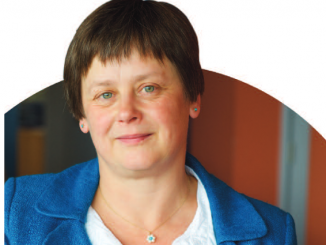European Cancer Nursing Day (ECND2019) on 18 May
sees the launch of the EONS Safety Manifesto.
Here, EONS President Lena Sharp describes how
this new initiative from the European Oncology
Nursing Society will have a major impact on
both patient and occupational safety
in cancer care settings.

Recent improved cancer treatments also carry with them new patient safety risks. Cancer nurses’ knowledge and actions are of great importance in reducing these risks: theyplay a pivotal role in the safe delivery and management of therapies used to treat cancer both within the multi-professional team and with patients and their significant others. The position of the cancer nurse is unique in that s/he is present along the entire care pathway.
According to the WHO (2018), approximately 1 in 10 hospitalised patients experience harm and around half of those incidents could have been prevented. Unsafe handling of medication is both costly and causes harm to our patients; around 15% of health care spending is wasted on adverse events. At the same time, we must remember that healthcare staff are also at risk from the toxicities related to cancer treatment. How can we ensure safety for both staff and patients?
The cancer nurse’s actions and skills are, naturally, of great importance here. Safe procedures and the correct use of devices are crucial steps in safety promotion, as is the courage to speak up and question when adverse events, including risks and near misses, do occur. Safety precautions include reducing medications errors. We must adhere to protocols and remember the 5 Rs of medication administration: Right patient, Right drug, Right dose, Right route, Right time.
An important aspect of the nursing role within the treatment context is to appropriately assess and manage treatment-related adverse effects and toxicities. Cancer nurses should also provide information to patients and their significant others and, by encouraging them to take an active part in their care, mitigate adverse effects. When providing evidence-based information, cancer nurses should encourage patients to ask questions and, even more importantly, to report if something is or seems to be wrong regarding any aspect of their treatment and care.
Cancer nurses must also take action to protect themselves from the known risks involved in handling cytotoxic drugs. They should use Personal Protective Equipment (PPE) to protect against the potential risks of skin rashes, effects on reproduction and even cancer. If a cancer nurse is planning to become pregnant or is pregnant and/or breastfeeding, she should tell her manager and, if working with cytotoxic drugs, radioactive agents or open radiation sources, ask for alternative duties. Protective clothing and following safety precautions will lower the risk, but it will not eliminate it.
These are just some of the ways in which cancer nurses can contribute strongly to achieving a safety culture which will reduce the risks for patients, for themselves and for other colleagues in the multi-professional team.However, although safety is the responsibility of us all, those who have the power to effect change in cancer treatment systems and protocols must step up too: organisations need to support their cancer nurses and focus more on both patient and occupational safety, allowing the time and investment required. We hope the recommendations and objectives contained in the EONS Safety Manifesto will inspire us all to make sure we give safety the priority it deserves.
More information:
Download the EONS Safety Manifesto
(including further reading)
at www.cancernurse.eu/ECND2019Download the Cancer Nursing Education Framework
which includes safety modules.Find out more about EONS
at www.cancernurse.eu





